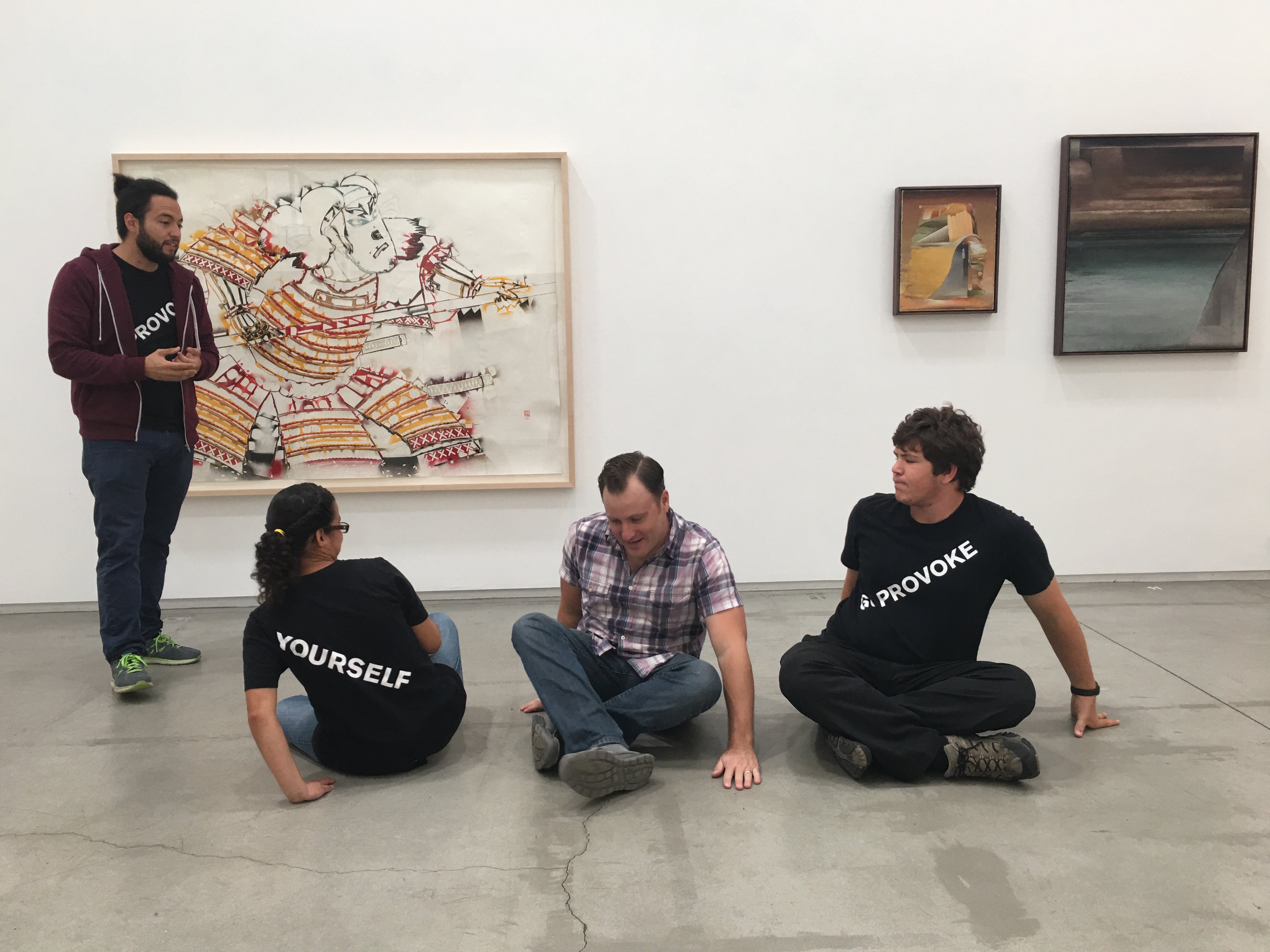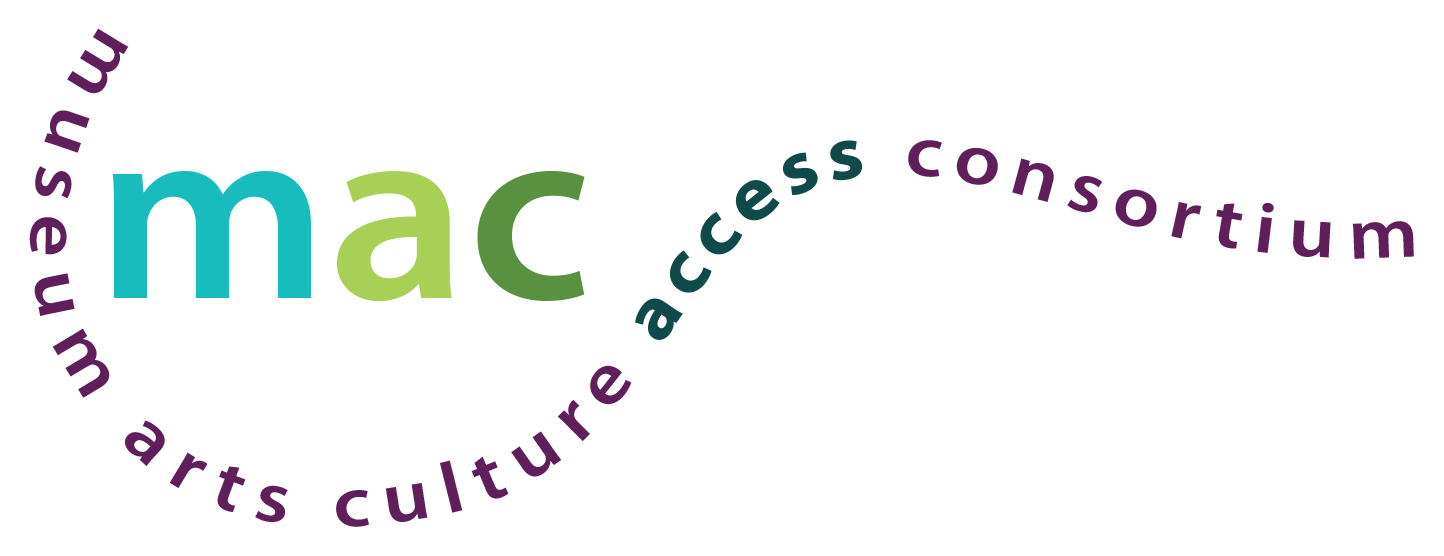
29 Nov A Path for Inclusive Hiring at ESMoA
Cultural Organization: ESMoA
Title of Program: Mychal’s/ESMoA Internship Program
Name of Guest Blogger and Role in Program: Holly M. Crawford, Mentor
Department: Education
Who does the program serve (age range, types of disabilities, families or individuals)?
The Mychal’s/ESMoA Internship Program is a seven-month long internship designed to introduce adult students from Mychal’s Path to Independence (P2I) program to future career opportunities in the arts. Interns work with ESMoA Education to deliver arts programming to K-12 students who visit ESMoA for field trips. Interns gain real-world experience for future jobs, learn gallery teaching methods, and are empowered to set personal and professional goals for themselves.
What are the interns’ responsibilities?
Mychal’s/ESMoA Interns are responsible for greeting visitors of all ages who come to ESMoA, providing gallery and studio support during school visits, care of studio materials, demonstrating best gallery teaching practices and facilitating gallery discussions with school groups. Additionally, Mychal’s/ESMoA Interns conduct research about artworks featured in ESMoA’s thematic Experiences and visit other arts and cultural institutions in and around Los Angeles.
Where do the intern(s) work? Do you use any supports or alter the environment in any way to make it comfortable for individuals with developmental disabilities?
Mychal’s/ESMoA interns work at ESMoA. Mychal’s provides a job coach for adults who work at partner organizations and businesses. The job coach assists Mychal’s adults with work tasks. Additional supports are added as needed or requested by Mychal’s/ESMoA interns.
What types of training opportunities are available for the intern(s)? How does this program prepare them for future employment?
Training and professional development is always happening in our program. I think one of the strongest outcomes is that many Mychal’s/ESMoA interns strengthen their language and communication skills which are great assets for future employers.
Are there opportunities at your institution for future employment for your intern(s)?
Not at present, but this is our dream goal and we are actively researching opportunities to make this vision a reality.
How is this program staffed? What resources or support does it require from your organization?
The leadership and staff at ESMoA have supported the program since its creation. Our Executive Director introduced me to Mychal’s Founder and Executive Director Ed Lynch and encouraged myself and my colleagues to think of ways we could partner together.
I am the lead coordinator at ESMoA; however, in the event that I were to step away from the position, I feel confidant that a colleague could step in and take over my duties. This is why I cannot stress how important it is for an organization to be “all in” with regards to partnership like the one between Mychal’s and ESMoA.
How long has this program been in place? How has it grown or changed since it began? How did the partnership with Mychal’s Learning Place come to be? What are the terms of the partnership?
The Mychal’s/ESMoA partnership began in 2013 after myself and colleague Chelsea Hogan were introduced to Mychal’s Founder and Executive Director Ed Lynch. We didn’t know then what the program would become and there was no blueprint at the time for us to follow. We knew we wanted to (1) build more employment opportunities for individuals with developmental and intellectual disabilities and (2) to provide a unique learning and job experience in an art laboratory.
What we learned during our pilot year, and what we continue to learn, is how to promote autonomy with our Mychal’s/ESMoA interns and how to be better partners. Mychal’s generously provides transportation for Mychal’s/ESMoA interns to and from ESMoA and is great about helping us communicate needs and support to parents. I believe the strength of our partnership is based on our communication; we are always talking to one another.
I think the biggest change in our program has been from a learning-based internship to a paid-internship. Paid internships are a must in the arts and culture field because compensating interns for their contributions is a necessity and paid internships help diversify, stabilize, and strengthen an organization’s workforce.
What has been the program’s biggest impact on your organization as a whole?
At the start of the partnership, the ESMoA staff had very little experience working with colleagues with developmental and intellectual disabilities. As a result of the partnership, staff feel more relaxed and comfortable working with special needs populations. When organizing programs and events, we take time to prioritize accessibility components and work with groups and visitors to ensure a fun and memorable experience at ESMoA as needed. We have also learned a lot about communication and how to listen with understanding and empathy.
What has been the biggest challenge you’ve faced in implementing this program? What have you learned through this program that other organizations could benefit from knowing?
When we started this program there was no blueprint for us to follow. As a result we have created a free curriculum available through ESMoA Academy that demonstrates how to create a sustainable partnership model with a non-museum organization and shows successful strategies for creating internship opportunities for adults with developmental disabilities. We hope that the lessons – which are available as video tutorials – can provide guidelines for other organizations invested in this work.

Sorry, the comment form is closed at this time.